Part EIGHTEEN: Working For Yourself
Geeky Camera Talk
If you've followed along up until now, you know we've danced around a few business issues, and delved into some Photoshop and Lightroom. we've touched on filters and some techniques for a few types of images. There are a few basic definitions and settings that Shooters should start to understand, in order to really become good Photographers.
The Exposure Triangle
Aperture
The Aperture setting on your camera is the size of the opening in your lens that light travels through to the camera sensor. Aperture is measured in f/number You’ve seen them everywhere: f/1.4, f/4, f/5.6, f/8, f/16, f/22 etc.

Image source: Pixabay Image free for commercial usage, without attribution.
I know this is confusing, but, the numbers start at the largest opening, f/1.4, and go to f/22, the smallest amount of opening. If you go from one f-stop to the next, it halves the size of the amount of opening in your camera’s lens and allows half the amount of light getting to the sensor. Not all lenses can go to the largest opening: f/1.4. In fact, mostly the more expensive lenses are that fast
Aperture directly affects how much of the image is in focus. A low f-number gives you a shallow depth of field, meaning only a small amount of the image is in focus. A large f-number (small opening) means a large amount of the image is in focus. Most landscape photography is f/22, or sometimes f/16
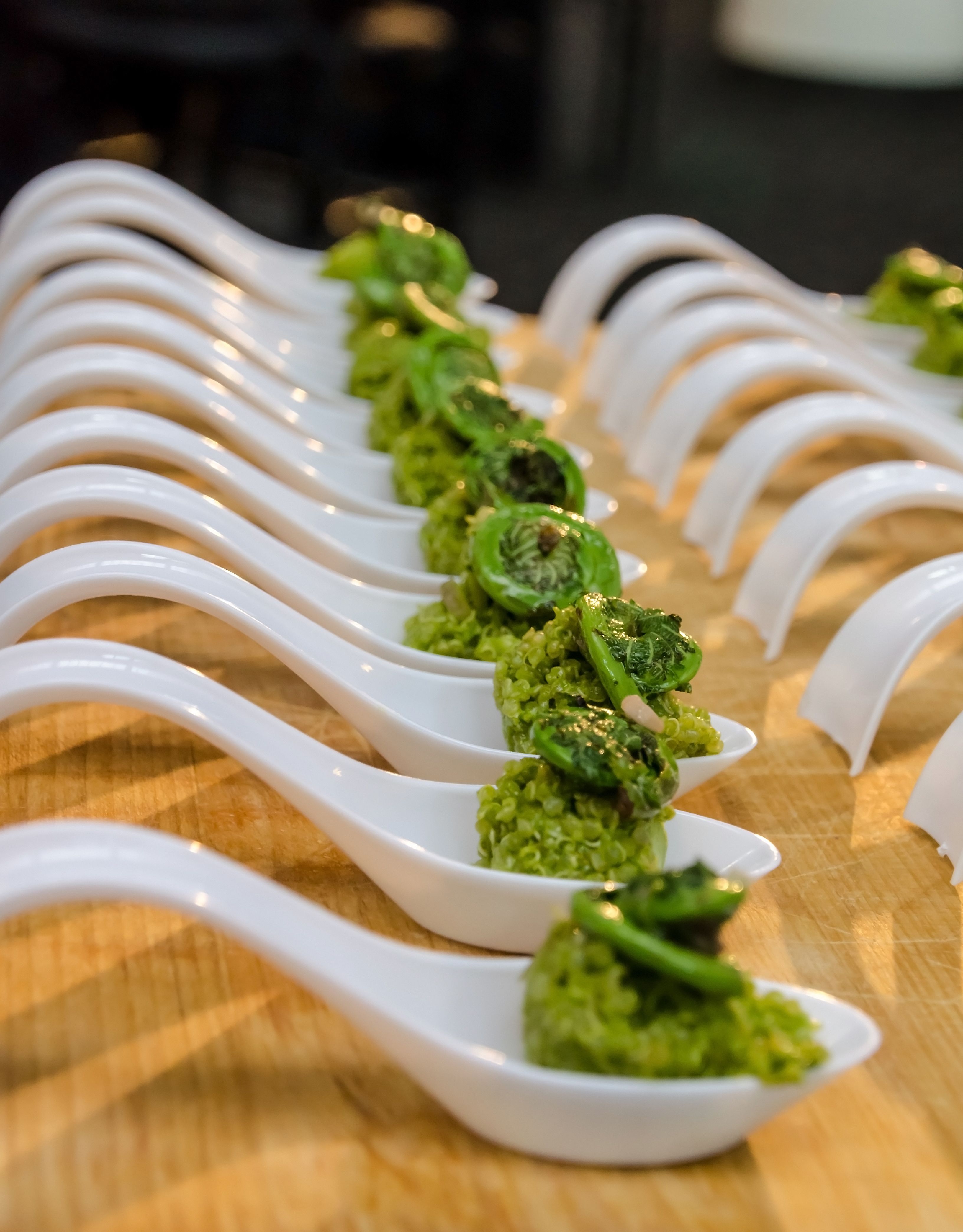
Fiddlehead salad taster at a wine and food night party we had
Controlling my Aperture settings allows me to get an interesting shot, with the foreground slightly our of focus, a tack sharp center, and, deeper into the background, again, out of focus. This draws my viewer's eyes along the image.
Shutter Speed
The Shutter Speed setting is the length of time your camera shutter is open, allowing light onto the sensor. Basically: how long are you taking a picture. Shutter speed affects how sharp or blurry the image. A short time means the motion or action will freeze and be really sharp. A long shutter speed means some motion or action is captured, meaning it will blur. This is how you get long exposures for star trails, or blur in a bird’s wings, or blur in a car’s lights, or motion blur in water for a waterfall.
At 1/3200th of a second, this shutter speed is only open for a tiny fraction, and Freezes the motion of the birds wings.
At far less time, this shot is 1/250th, and shows some motion in wings.
A shutter speed of 1,216 seconds or a little over 20 minutes, shows even the stars are moving at night!
ISO
The ISO setting on the camera is basically the sensitivity to light. Higher ISO settings means the camera sensor is more sensitive to light. Lower means less so. Higher sensitivity usually means more noise or random pixels of color, in your photos. It’s best to keep the camera set for as low an ISO as possible and still get a decent image.
Together, ISO, Aperture and Shutter Speed make up the Exposure Triangle. Every shot you make is a some form of all three of these to create the exact image you want.
Sunny 16
Sunny 16 says on a bright and sunny day with clear skies, or a hazy sun on sandy beach, or snow, the best exposure for your shot is with your aperture set to f/16, and your shutter speed set to 1/ISO setting.
Outdoor Eight
The Outdoor Eight rule says when shooting outside in the middle of a sunny day, set your aperture to f/8, and your shutter speed to 1/100
It is a good starting point.
Your lens and f/8
Another key tip about using f8 for your aperture, is that most lenses look great at f8. It’s the middle of the lens and the manufacturer really does a great job there for sharpness. Most lenses are at their worst at either end (narrowest or widest aperture)
Bokeh
Pronounced however you want (I am NOT wading into the wars that serious photographers get into over the term BoKAY, or BOKeh, or boke, or whatevs!!!)
As with many things Japanese, this is the Way as in "the way the lens renders out-of-focus points of light" It's the types of interference patterns set up by the blades of the aperture opening in your lens. For me, it is the fuzzies that happen in the background of your image, as a result of settings in aperture, and depth of field.
f5.6, 1/640th sec
Here, a bit of Bokeh, in the background of my Hydrangea, and a bee goes and plays with some pollen.
Part 17 WORK for yourself: To Delete, Or Not To Delete
Part 16 WORK for yourself: Rules Are Made For Breakin'
Part 15 WORK for yourself: Long Exposure
Part 14 WORK for yourself: Creating A Panorama
Part 13 WORK for yourself: NIK’s Silver FX Pro Filter
Part 12 WORK for yourself: NIK’s Color Efex Pro Filter
Part 11 WORK for yourself: NIK’s Viveza Filter
Part 10 WORK for yourself: High Pass Filter
Part 9 WORK for yourself: Photoshopping’
Part 8 WORK for yourself: Go To The Light…room!
Part 7 WORK for yourself: From Here To There, My Workflow!
Part 6 WORK for yourself: RAW?JPG? Add Copyright Note
Part 5 WORK for yourself: My Machine, My Hardware!
Part 4 WORK for yourself: More Stuff? More Money!
Part 3 WORK for yourself: Camera? What Camera?
Part 2 WORK For Yourself: Wait? You Charge HOW Much?
Part 1 WORK for Yourself: How Much Can I Make?

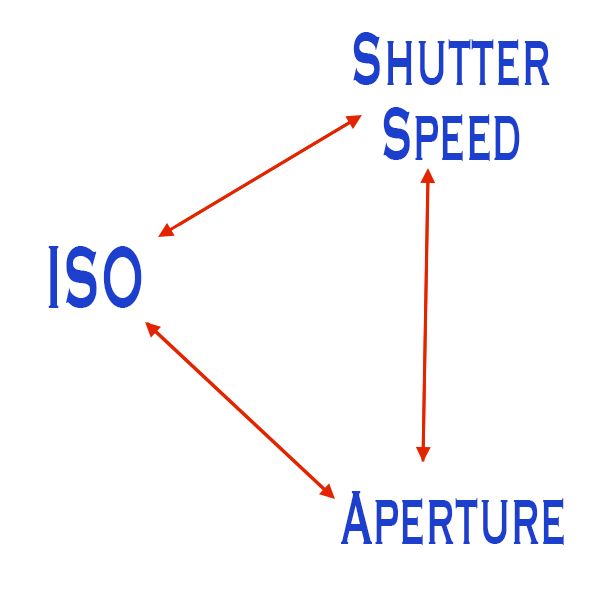
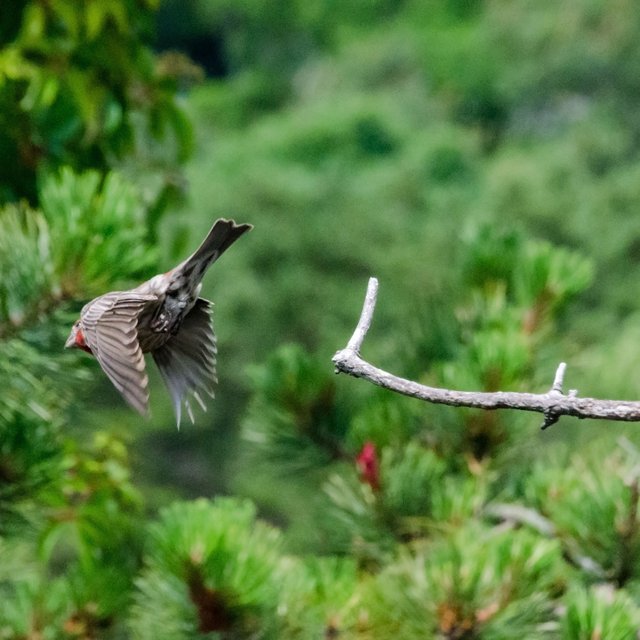
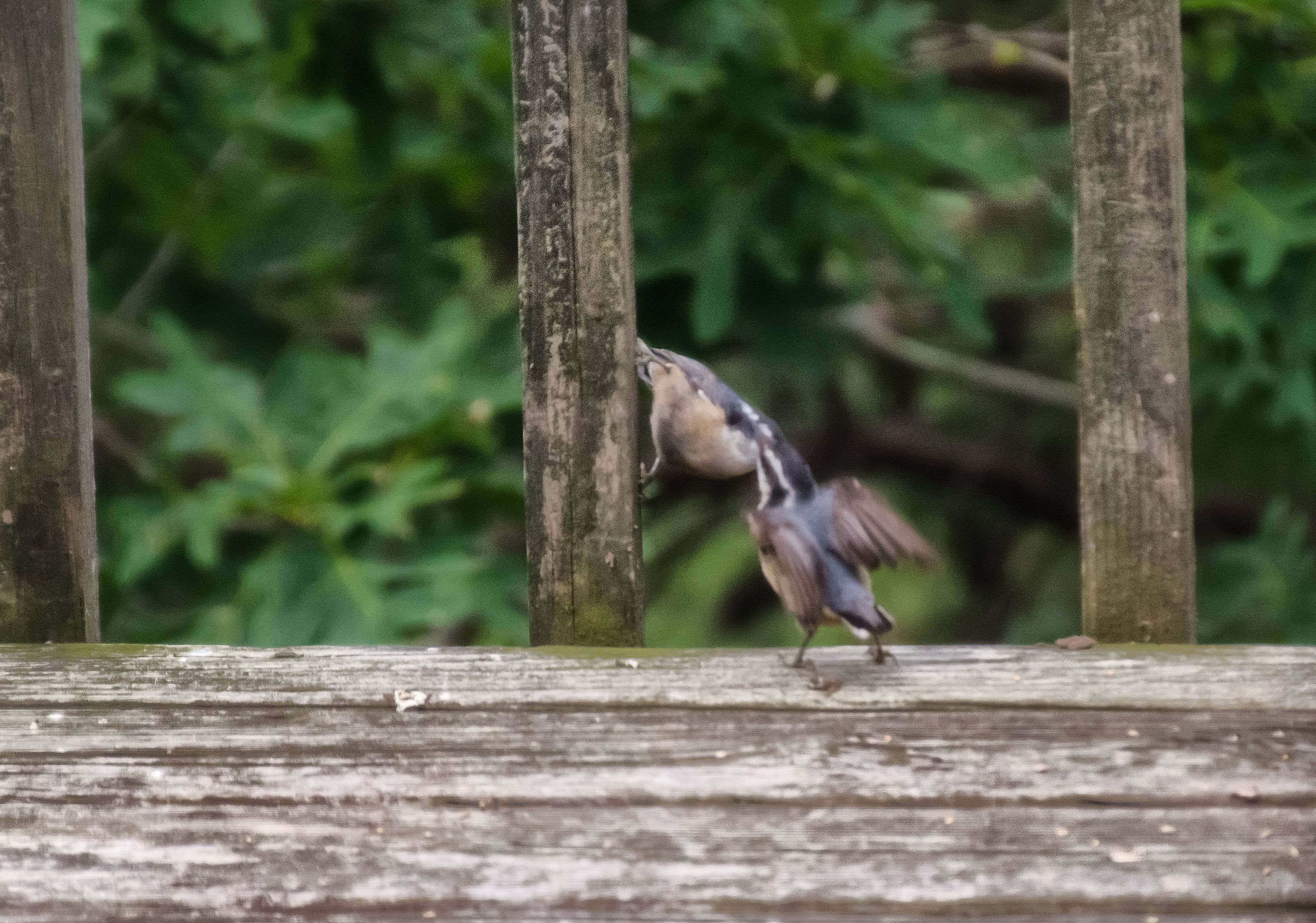
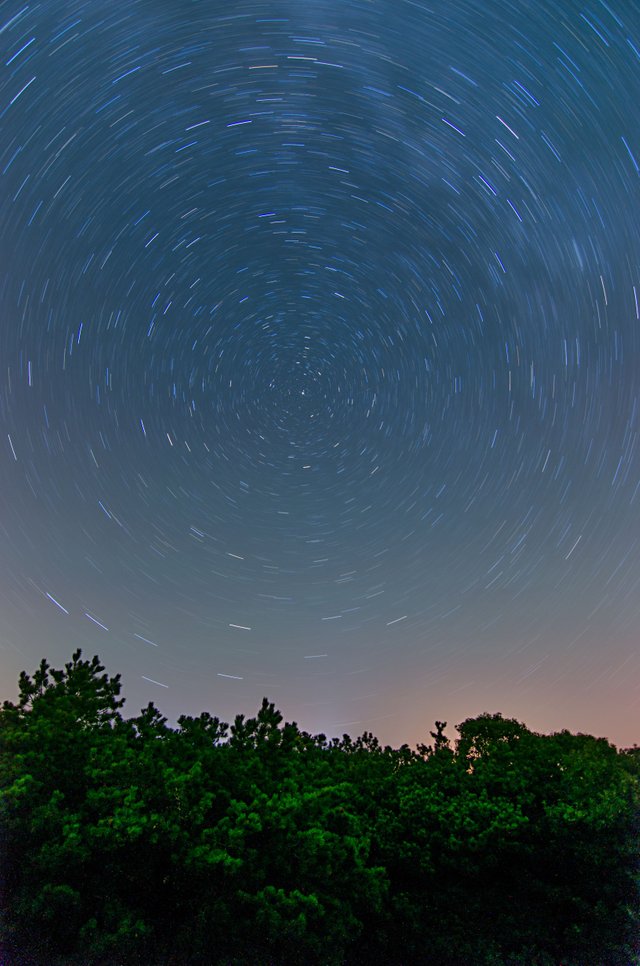
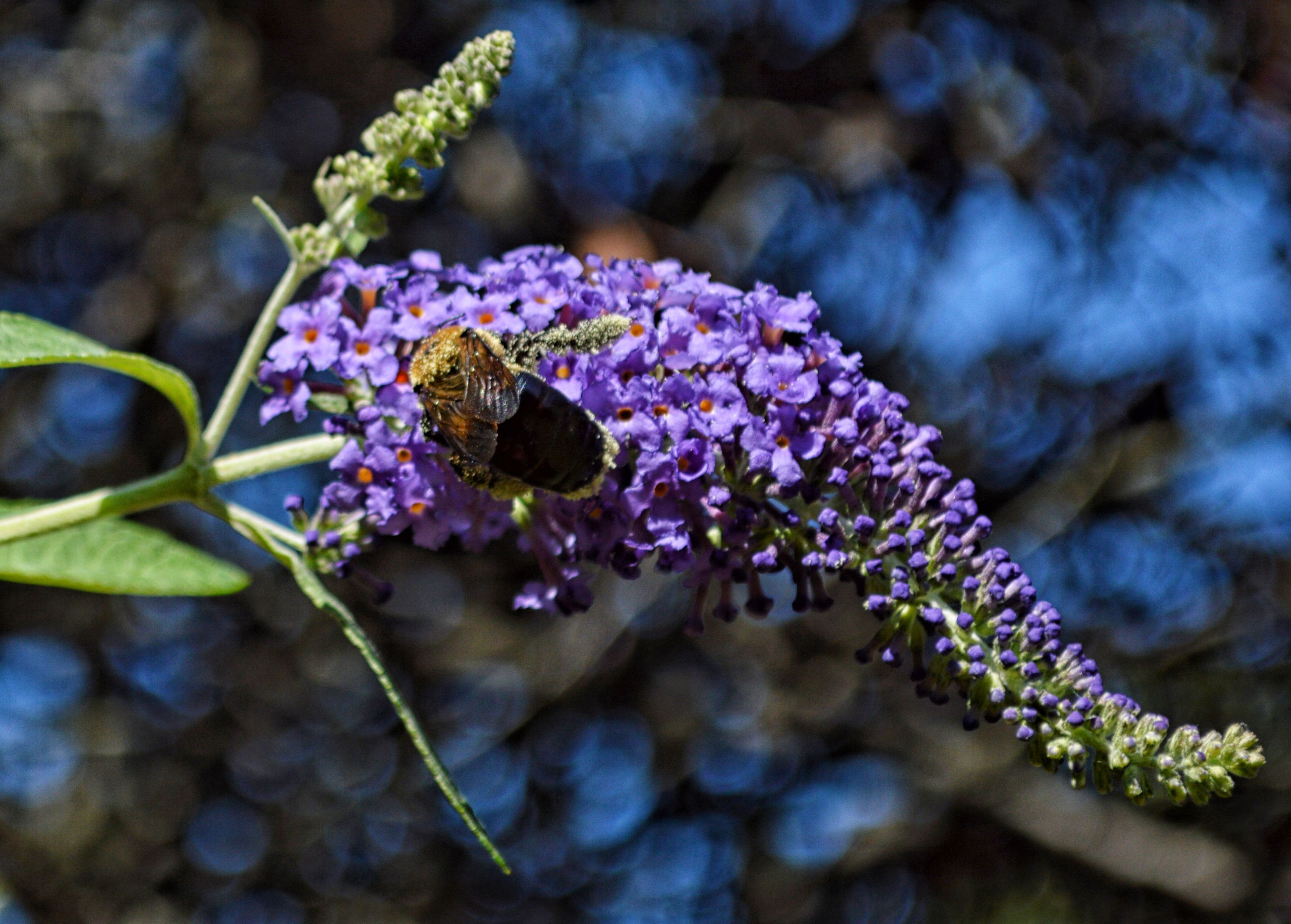
This is a great how-to rundown of photography. Very accessible to help folks understand. It’s easy for some people to feel overwhelmed with all the numbers.
I hope you keep these kind of posts coming! Am following you now!
Hey @bluefinstudios! I saw your post in PYPT, I really liked it.
I will go back and restart the course, I am really into Macro-Photography!
Have a nice day,
Luca ✌️
Hello goodnight @bluefinstudios, I would like to learn more about photography. I have always liked taking pictures, I would like to learn to improve my photographs. I have a samsung camera. what should I do? or recommend a course to improve my fofos please.